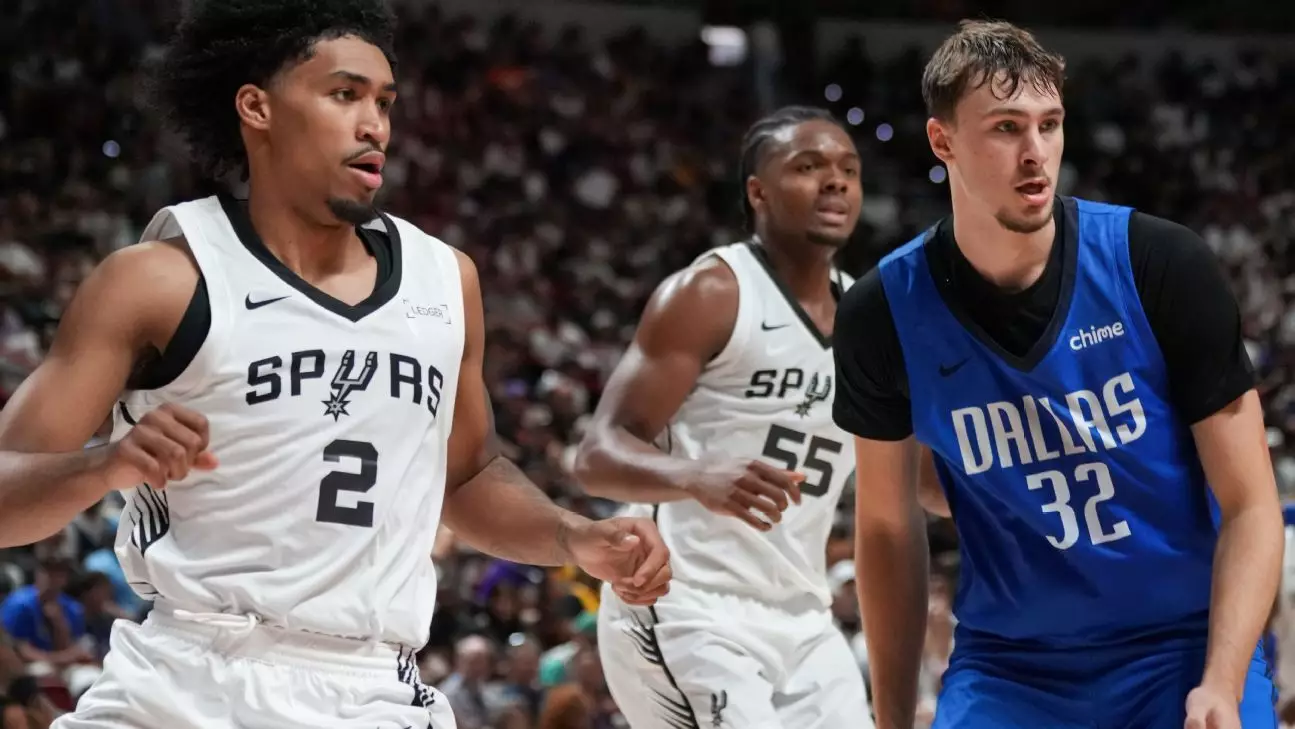The recent summer league encounter between the top two prospects of the 2025 NBA draft, Cooper Flagg and Dylan Harper, has ignited a storm of speculation and anticipation that is as thrilling as it is fraught with peril. While on the surface, their performances—Flagg’s explosive 31-point effort and Harper’s solid return—offer a tantalizing glimpse into the future of the league, a deeper analysis raises questions about the sustainability of such hype and the real implications for their careers and the broader NBA landscape. It is tempting to view these performances through a lens of optimism, but one must also be critically aware of the dangerous allure of overhyping young talent before they have weathered the inevitable challenges that lay ahead.
From an optimistic perspective, the spectacle of two top-tier prospects showcasing their skills in front of a packed arena suggests that the league’s future remains bright. Their athleticism, quick adaptation, and evident competitive fire hint at a new generation ready to redefine the game. The energy in the Thomas & Mack Center was palpable, and their highlight-reel moments—dunks, blocks, clutch free throws—are evidence of their potential to electrify audiences and elevate team performances. This kind of excitement is invaluable in an era increasingly starved for genuine, homegrown talent that can transform the sport into a fertile ground for narratives and fresh rivalries.
Yet, beneath this surface lies an almost naive optimism that glosses over the harsh realities of professional sports. The summer league is an imperfect mirror of the NBA’s brutal grind—an exhibition that often inflates expectations while masking the myriad difficulties young players face when they transition to full-time professional competition. Their initial flashes of brilliance, while impressive, are still early signs rather than definitive proof that they will ascend seamlessly to NBA stardom. The journey from summer league hero to NBA superstar is riddled with pitfalls: injuries, inconsistent performance, psychological pressures, and the relentless scrutiny of fans and media.
A critical element often overlooked is the degree of development remaining for these players. Flagg’s aggressive drives and free-throw prowess, while commendable, reflect a game still in evolution. Similarly, Harper’s high-flying blocks and versatile scoring show promise but do not yet guarantee dominance. Over-reliance on highlight moments can obscure the fact that professional success hinges on comprehensive skill development, maturity, and resilience—traits that can only be cultivated over years, not months. The NBA is a merciless arena, and what works in summer league cannot be naively extrapolated into league-wide consistency.
Moreover, the hype surrounding young prospects can unintentionally distort team-building strategies. Front offices may overinvest future expectations, neglecting more immediate needs and fostering a culture of impatience. This can create unwarranted pressure on these youth, effectively setting them up for failure if they falter or fail to meet inflated expectations. It’s essential for stakeholders—coaches, executives, fans—to maintain a balanced perspective that recognizes raw talent without overestimating its immediate impact.
There is also a broader societal consideration: the risk of creating unrealistic hero narratives around teenagers and young adults. We live in an age where social media amplifies every performance, often neglecting the underlying struggles behind athletic exploits. This can distort public perception, idealizing overnight success while dismissing the perseverance and hard work needed to sustain it. The “sports wunderkid” syndrome often leads to burnout, injuries, or psychological burnout as young athletes grapple with the weight of expectations before they are emotionally equipped to handle such pressures.
In this context, the importance of patience, sound development programs, and holistic support systems becomes paramount. The NBA, as a league, should champion a more measured approach—celebrating potential without rushing to declare prodigious talents as the next luminaries. Recognizing that the true value of these prospects lies in their long-term growth, rather than immediate dominance, aligns better with a center-left liberal perspective—one that advocates for responsible nurturing and equitable opportunity over superficial hype.
The summer league performances, while undeniably exciting, remind us that the real test of young talent is their ability to withstand adversity, adapt their games, and embrace the continuous journey of self-improvement. If the league and its fans can resist the temptation to prematurely crown these prospects and instead focus on sustainable development, we may witness not just fleeting flashes of brilliance but the emergence of truly transformative players who can elevate the sport to new heights with integrity, resilience, and authentic skill. Only time will tell whether the promise seen in these summer league highlights will translate into lasting impact—or if we are merely witnessing the brightest sparks before the inevitable fade.
—
Note: This critical analysis emphasizes the dangers of overhyped projections in sports, advocating for patience and responsible development, aligning with a center-leaning liberal perspective that values equitable opportunity, long-term growth, and psychological well-being over superficial narratives of instant success.

Leave a Reply